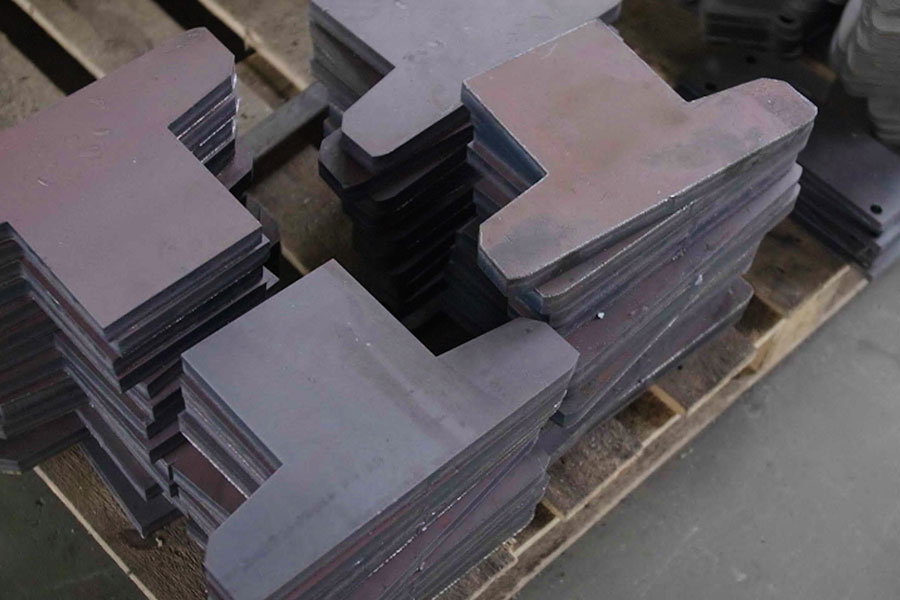When Medical Devices Meet Laser Cutting
Keling Medical was established in 1996 as a national high-tech enterprise, specializing in the research and development, production and sales of surgical shadowless lamps, operating tables, survey suction devices and other medical devices. The product sales model covers domestic sales, export sales and government procurement. In 2020, I purchased one Feiyue Laser GTpro and one TS65.
“The new crown is coming, and growth against the trend presents a new test”
CEO TANG
According to data from the Prospective Economist, in 2020, the global medical device market will exceed US$500 billion for the first time, an increase of over 10%.
In China, although benefiting from the aging population and the growth of per capita disposable income, the sales volume of medical machining devices has maintained a compound growth rate of 18% since 2016, but it has never fully tested the response speed of enterprises like the arrival of the new crown epidemic.
This is the strength of Keling Medical. Since its establishment in 1996, as a private enterprise, it has been able to stand on the market for 25 years, in addition to products, it depends on the rapid response speed to changes. In the words of Wen Chungeng, deputy general manager of Keling Medical, “multi-variety and small-batch response is fast.”
The prevention and control of the new crown epidemic has become normalized, and the state has stepped up efforts to transform the infectious disease wards of various medical institutions, and the demand for medical equipment including operating beds and shadowless lamps has also increased.
The requirements put forward by the terminal market, in addition to product quality, pay more attention to the speed of delivery. Benefiting from the introduction of laser cutting and cnc machining centers and welding robots, Keling Medical can now complete metal processing that required cumbersome and multiple processes in the past on a single laser cutting machine.
At Keling, high productivity depends on high efficiency. How fast is production now? Wen Chungeng said that using the previous processing mode, it took 7 days to complete the original 100 medical devices, but now it can be completed in one day. This achieves the annual production of more than 30,000 medical devices (sets).
“When laser processing is involved in design and development”
Can laser processing also be involved in the R&D and design of medical devices? Yes, you heard that right.
The functional upgrade of operating room medical equipment such as operating table and shadowless lamp is heavily dependent on the achievable degree in actual production. If it can’t be realized in production, the ideal design scheme can only stay on the drawing.
Keling Medical introduces china laser cutting into the R&D and design of medical devices. By importing the product design graphics into the CNC system of the laser cutting machine, the accuracy of the error of 0.1mm can be restored, so that the feasibility of new design ideas can be tested on the basis of solid samples.
Acts like a precise “painter” when laser processing performs cutting based on imported graphics. Based on this feature, the design space of medical devices has been greatly expanded – because it is never afraid of components with complex processes and difficult processing. “If you want it, it can do it.”
“Dancing in shackles only dances better”
Medical equipment is far different from general industrial products. It acts directly or indirectly on the human body and is related to human life. This determines the state’s monitoring of the production process of the industry, which is more stringent than any other type of manufactured product.
To engage in the production and sales of medical devices in China, you need to go through layers of customs clearance. The first step is to obtain a license for the production of medical devices. Secondly, each product must obtain a product registration certificate approved by the State Drug Administration before it is marketed.
“Every product must meet the technical requirements and national mandatory standards of the corresponding category.” Wen Chungeng said.
In order to meet these standards, the precision of the product cannot be sloppy at all. Here again, laser processing plays a key role.
For example, the production of the shell of the gastric lavage machine used to rely on multiple processes such as shearing, punching, and grinding. For another example, the chassis of the operating table is mainly composed of steel pipes, and the steel pipes need to be polished after drilling.
Even so, product consistency mainly depends on the craftsmanship of workers, which is always difficult to guarantee.
The laser cutting machine is controlled by an intelligent numerical control system, which is far superior to the hand-held operation of skilled workers in terms of processing accuracy. For medical devices, the processing accuracy is directly related to the degree of product compliance. Only by keeping the baseline in terms of accuracy, the speed-up in productivity is meaningful.
Updating the production model and building a machining aluminum machine center is a big investment for enterprises. However, in the view of Keling Medical, a company should not only look at the present, but also look at the long-term. “It’s the right investment for us to be able to leverage ten in one shot.”
At the same time, they also regard embracing change as one of the laws of survival. The high standards and strict requirements of the industry are not a constraint but a driving force for Keling Medical.
Dancing in shackles only dances better.
Note: Up to now, Feiyue Laser has served many medical device companies to upgrade advanced production models and realize laser processing of precision components.

